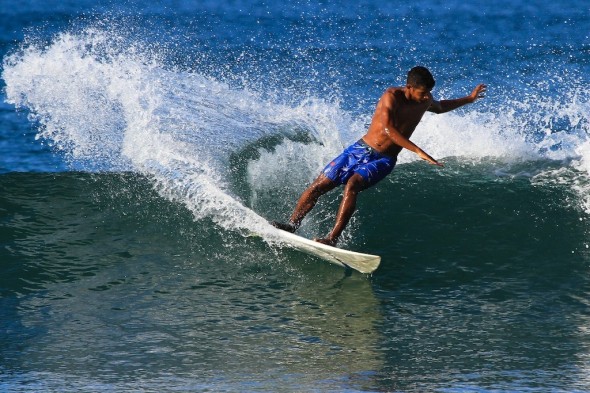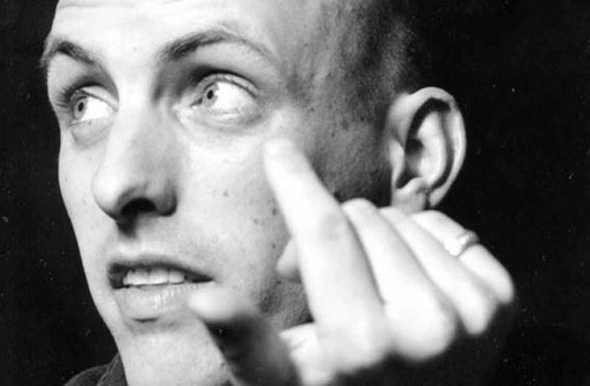 You may have met Lee at the Harmony. She’s the curator of our Tiendita, a long-time Nosara long boarder and a bad ass. Like many of the folks who work with the Harmony, she found her way to Nosara for the waves. When she’s not in Costa Rica, Lee lives and surfs in Miami.
You may have met Lee at the Harmony. She’s the curator of our Tiendita, a long-time Nosara long boarder and a bad ass. Like many of the folks who work with the Harmony, she found her way to Nosara for the waves. When she’s not in Costa Rica, Lee lives and surfs in Miami.
Blog
SURFING IS… WITH LEE BAILLY
Get Offset

A carbon footprint is the measure of the impact that a person or business has on the environment, specifically in terms of climate change, as measured in kilograms of carbon dioxide. It’s also probably the most over-used term in recent history. Calculate your impact at CarbonFund, where you can also buy carbon offsets—one equals the reduction of one metric ton of CO2—by investing in wind or solar powered industry.
Guiones Surf Photo of the Week
 So many incarnations of wave riding tools—all with their own unique qualities. Using excess speed from the drop, a bodyboarder can lay it on rail for an early bottom turn as hard as his stand-up counterparts.
So many incarnations of wave riding tools—all with their own unique qualities. Using excess speed from the drop, a bodyboarder can lay it on rail for an early bottom turn as hard as his stand-up counterparts.
Photo provided by Surfing Nosara
The Invisible Birds of Central America
For Alicia
SURFING IS… WITH LEAH GREENBLATT
Know Your GMOs
 A genetically modified organism (GMO), genetically engineered organism (GEO) or genetically engineered (GE) food—it’s all the same thing, under different acronyms—is typically a plant that’s had its genes altered, which is how you get things like golden rice fortified with vitamin A, pesticide-producing corn and “terminator” seeds that force farmers to buy new ones yearly from companies like Monsanto, which produces the majority of genetically modified seeds and crops in the world.
A genetically modified organism (GMO), genetically engineered organism (GEO) or genetically engineered (GE) food—it’s all the same thing, under different acronyms—is typically a plant that’s had its genes altered, which is how you get things like golden rice fortified with vitamin A, pesticide-producing corn and “terminator” seeds that force farmers to buy new ones yearly from companies like Monsanto, which produces the majority of genetically modified seeds and crops in the world.
Proponents—including the U.S. government—say GMOs are harmless. Opponents point to studies that link these so-called “Frankenfoods” to food allergies and other health problems, as well as the high levels of pesticides and herbicides that many GMO plants are designed to tolerate.
A full 85% of U.S. corn production is genetically modified; the same can be said for soy (91%), cotton (91%), canola (85%) and sugar beets (95%), not to mention the milk, meat and eggs from animals that eat genetically modified feed.
Despite the fact that 60 other nations label GMOs, and that 93% of Americans want labeling (according to a New York Times poll), it is not yet required by the federal government. In the meantime, look for USDA Certified Organic foods, which are guaranteed by the government not to contain GMOs. Bonus!
Guiones Surf Photo of the Week
 Tico Turn: There was a time decades ago when traveling Surfers from near and far passed through the Nicoya and ooooooooo-ed and aaaaaaah-ed residents with their abilities. That time has long since passed. Now, on any given day along the peninsula, even if the Surf is momentarily not world class, the Locals’ Surfing certainly is.
Tico Turn: There was a time decades ago when traveling Surfers from near and far passed through the Nicoya and ooooooooo-ed and aaaaaaah-ed residents with their abilities. That time has long since passed. Now, on any given day along the peninsula, even if the Surf is momentarily not world class, the Locals’ Surfing certainly is.
Photo provided by Surfing Nosara
Central Creatives: Lee Fritz and Jenna Morse on the Solar Women of Totogalpa
 NOTE: Today we launch a new series: “Central Creatives”—Wednesday posts featuring artists who create projects in and around Costa Rica! We hope you find their work as exciting as we do. Kicking it off are Lee Fritz and Jenna Morse, whose incredible short documentary Adelante Con El Sol: The Solar Women of Totogalpa was an Official Selection at the 2013 PovertyCure Film Festival and inspired this new column.
NOTE: Today we launch a new series: “Central Creatives”—Wednesday posts featuring artists who create projects in and around Costa Rica! We hope you find their work as exciting as we do. Kicking it off are Lee Fritz and Jenna Morse, whose incredible short documentary Adelante Con El Sol: The Solar Women of Totogalpa was an Official Selection at the 2013 PovertyCure Film Festival and inspired this new column.
Names: Lee Fritz & Jenna Morse
Where do you live: New Orleans, LA
What is your main artistic practice? We run a small full-service film production company out of New Orleans and do a little bit of everything: shooting and editing our own projects- We also dabble in many genres from commercials and music videos to documentaries and narrative.
Tell us about a project that brought you to Central America:
Adelante Con El Sol: The Solar Women of Totogalpa is a short documentary we made about a group of women rural Nicaragua empowering themselves and their community through the use of solar technologies.
We first heard about the Solar Women through Lee’s dad, an engineer at Cornell University who travels to the village of Sabana Grande every year and collaborates with the women on various solar oven designs. At the time we had just left New York City and were spending some time in Ithaca trying to figure out how to be the filmmakers we wanted to be and work on projects we felt inspired by but also have it be on our own terms. We had never made a proper documentary before but the story of these women and their work was compelling in many different ways; it had environmental sustainability, it had women’s empowerment in a male-dominated society, and it also had a community in the developing world lifting itself out of poverty. We only had a week in Nicaragua so we had to quickly figure out how we were going to tell the story. The shoot was nerveracking since this was the first thing we ever shot together and conducting interviews in another language was one of many hurdles to overcome. We had to iron out our roles fast and learn how to communicate with each other in this new way but once we got it down it was very exciting.
Where can we find your work?
All of our work is on our website as well as our vimeo page. However, the full length version of our documentary is only available on vimeo right now
http://calmdogproductions.com
https://vimeo.com/calmdog
What are you working on next?
We have several projects in the works. Besides our regular freelance work for clients around New Orleans we are collaborating with a friend on a narrative web series as well as writing our first feature together.


![Screen Shot 2013-12-12 at 11.48.11 AM[1][1]](http://harmony-blog.com/wp-content/uploads/2014/01/Screen-Shot-2013-12-12-at-11.48.11-AM11.png)




